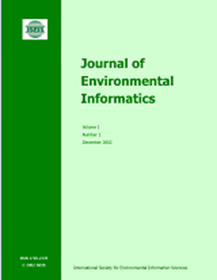构建三维氮化石墨碳基材料及其在环境光催化、光电化学和电化学中应用的最新进展
IF 5.4
1区 环境科学与生态学
Q1 ENVIRONMENTAL SCIENCES
引用次数: 0
摘要
最近,石墨氮化碳(g-C3N4)作为一种前景广阔的可见光驱动半导体材料,在光催化水分离、有机污染物降解和二氧化碳还原方面受到了广泛关注。然而,由于光吸附不足、光生成的电荷载流子未得到有效利用以及比表面积较低等原因,块状 g-C3N4 的光催化活性受到了限制。与块状 g-C3N4 相比,三维石墨氮化碳基材料(3D CNBMs)具有突出的物理和化学特性,如大比表面积、丰富的活性位点和优异的导电性。本文回顾了三维氮化石墨基材料的最新研究成果,介绍了三维氮化石墨基材料合成方法的最新进展。同时,系统回顾和讨论了三维 CNBM 在光催化、光电化学和电化学中的各种应用。此外,还提出了三维 CNBM 可能的改进方案和发展前景。本综述旨在总结三维 CNBM 在环境和能源应用领域的最新进展,并提供一些创新思路,以加快三维 CNBM 的突破性研究和开发,实现可持续发展的未来。本文章由计算机程序翻译,如有差异,请以英文原文为准。
Recent Advances in Constructing Three-Dimensional Graphitic Carbon Nitride Based Materials and Their Applications in Environmental Photocatalysis, Photo-Electrochemistry, and Electrochemistry
Recently, graphitic carbon nitride (g-C3N4), a promising visible-light-driven semiconductor material, has received enormous attention for photocatalytic water splitting, organic pollutant degradation, and CO2 reduction. However, the photocatalytic activity of bulk g-C3N4 is restricted due to the insufficient light adsorption, ineffective utilization of photogenerated charge carriers, and low specific surface area. Compared with bulk g-C3N4, the three-dimensional graphitic carbon nitride based materials (3D CNBMs) have outstanding physical and chemical characteristics, such as large specific area, plentiful active sites, and excellent electrical conductivity. This article reviews the latest achievements in 3D CNBMs, and presents the state-of-the-art advances in the synthetic methods of 3D CNBMs. Meanwhile, various applications of 3D CNBMs in photocatalysis, photo-electrochemistry, and electrochemistry are systematically reviewed and discussed. In addition, possible improvements and perspectives of 3D CNBMs are proposed. This review aims to summarize a panorama of the up-to-date processes of 3D CNBMs in environmental and energy applications and provide some innovative thoughts to accelerate the ground-breaking research and development of 3D CNBMs for a sustainable future.
求助全文
通过发布文献求助,成功后即可免费获取论文全文。
去求助
来源期刊

Journal of Environmental Informatics
ENVIRONMENTAL SCIENCES-
CiteScore
12.40
自引率
2.90%
发文量
7
审稿时长
24 months
期刊介绍:
Journal of Environmental Informatics (JEI) is an international, peer-reviewed, and interdisciplinary publication designed to foster research innovation and discovery on basic science and information technology for addressing various environmental problems. The journal aims to motivate and enhance the integration of science and technology to help develop sustainable solutions that are consensus-oriented, risk-informed, scientifically-based and cost-effective. JEI serves researchers, educators and practitioners who are interested in theoretical and/or applied aspects of environmental science, regardless of disciplinary boundaries. The topics addressed by the journal include:
- Planning of energy, environmental and ecological management systems
- Simulation, optimization and Environmental decision support
- Environmental geomatics - GIS, RS and other spatial information technologies
- Informatics for environmental chemistry and biochemistry
- Environmental applications of functional materials
- Environmental phenomena at atomic, molecular and macromolecular scales
- Modeling of chemical, biological and environmental processes
- Modeling of biotechnological systems for enhanced pollution mitigation
- Computer graphics and visualization for environmental decision support
- Artificial intelligence and expert systems for environmental applications
- Environmental statistics and risk analysis
- Climate modeling, downscaling, impact assessment, and adaptation planning
- Other areas of environmental systems science and information technology.
 求助内容:
求助内容: 应助结果提醒方式:
应助结果提醒方式:


